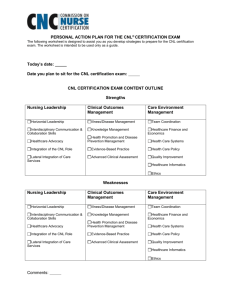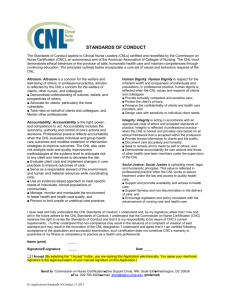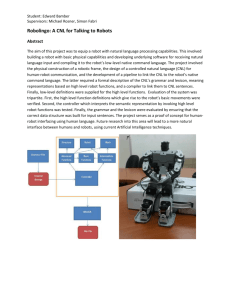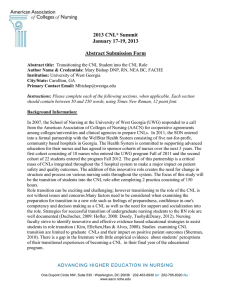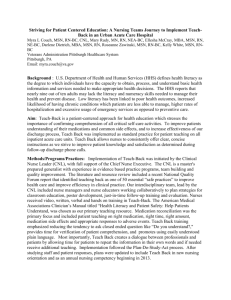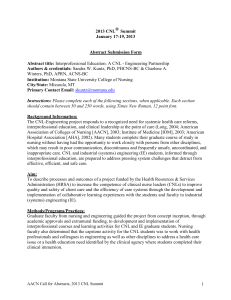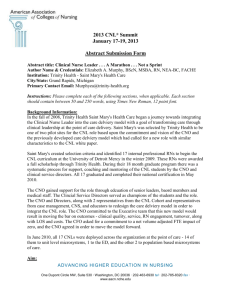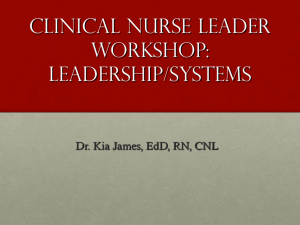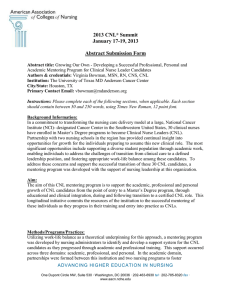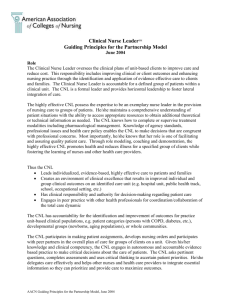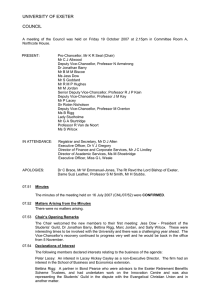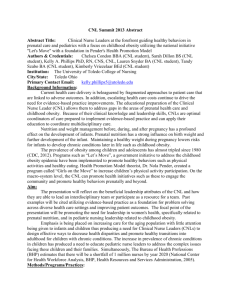A Self-Efficacy Scale for Clinical Nurse Leaders ®: (CNLs® )
advertisement
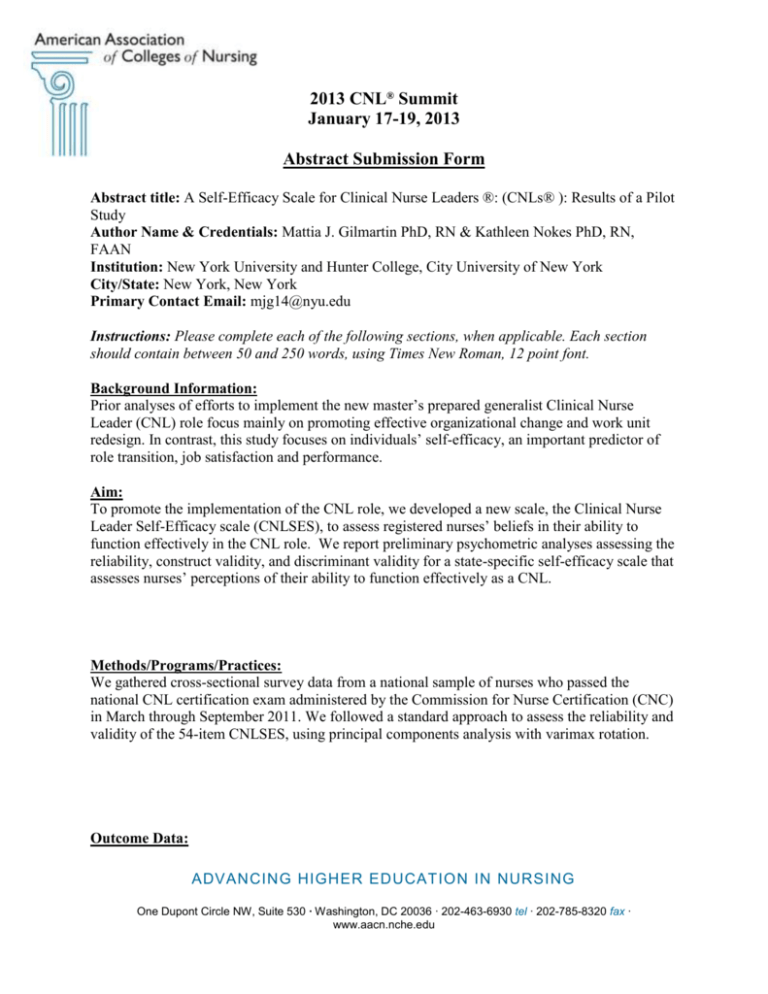
2013 CNL® Summit January 17-19, 2013 Abstract Submission Form Abstract title: A Self-Efficacy Scale for Clinical Nurse Leaders ®: (CNLs® ): Results of a Pilot Study Author Name & Credentials: Mattia J. Gilmartin PhD, RN & Kathleen Nokes PhD, RN, FAAN Institution: New York University and Hunter College, City University of New York City/State: New York, New York Primary Contact Email: mjg14@nyu.edu Instructions: Please complete each of the following sections, when applicable. Each section should contain between 50 and 250 words, using Times New Roman, 12 point font. Background Information: Prior analyses of efforts to implement the new master’s prepared generalist Clinical Nurse Leader (CNL) role focus mainly on promoting effective organizational change and work unit redesign. In contrast, this study focuses on individuals’ self-efficacy, an important predictor of role transition, job satisfaction and performance. Aim: To promote the implementation of the CNL role, we developed a new scale, the Clinical Nurse Leader Self-Efficacy scale (CNLSES), to assess registered nurses’ beliefs in their ability to function effectively in the CNL role. We report preliminary psychometric analyses assessing the reliability, construct validity, and discriminant validity for a state-specific self-efficacy scale that assesses nurses’ perceptions of their ability to function effectively as a CNL. Methods/Programs/Practices: We gathered cross-sectional survey data from a national sample of nurses who passed the national CNL certification exam administered by the Commission for Nurse Certification (CNC) in March through September 2011. We followed a standard approach to assess the reliability and validity of the 54-item CNLSES, using principal components analysis with varimax rotation. Outcome Data: ADVANCING HIGHER EDUCATION IN NURSING One Dupont Circle NW, Suite 530 ∙ Washington, DC 20036 ∙ 202-463-6930 tel ∙ 202-785-8320 fax ∙ www.aacn.nche.edu Based on the results from principal components analysis, we identified nine distinct factors with eigen values of >1.0that measure distinctive role competencies for CNL practice. These results support the scale’s construct validity. Cronbach coefficient alphas for the indices range from .97-.86 demonstrating strong reliability as measured by internal consistency. Further, the pattern of zero-order correlations among the indices shows moderate levels of discriminant validity among the measures of role competencies for the CNLSES. Conclusion: The CNLSES role competencies align closely with those prescribed by the American Association of College of Nursing. The CNLSES holds promise as a self-assessment tool to develop comprehensive role implementation and career transition programs and to inform changes to CNL program curricula to gain the full benefit of CNL practice. Further analyses with larger samples using structural equation modeling are warranted to support possible additional development of the CNLSES. AACN Call for Abstracts, 2013 CNL Summit 2
